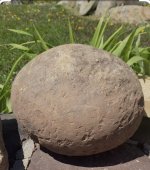Capt Nemo
Bronze Member
I'm finding a lot of magnetite in the blond sand tailings. Are there any other dark heavy minerals that could be present that might be pushing the magnetite out? I've seen magnetite that clumps and gets real light once magnetised, but I haven't ran a magnet in this stuff yet. I'm thinking there might be somthing running a high 5 to 6 SG which would displace the iron. I think sending a sample in for testing is in order. Would be cool to find something like uranium. It also seems to run slower on the miller table. The gold sits like normal, but the BS isn't moving as easily.
I do have a 1 gal sample of wild material I can send for the test.
I do have a 1 gal sample of wild material I can send for the test.
Upvote
0






